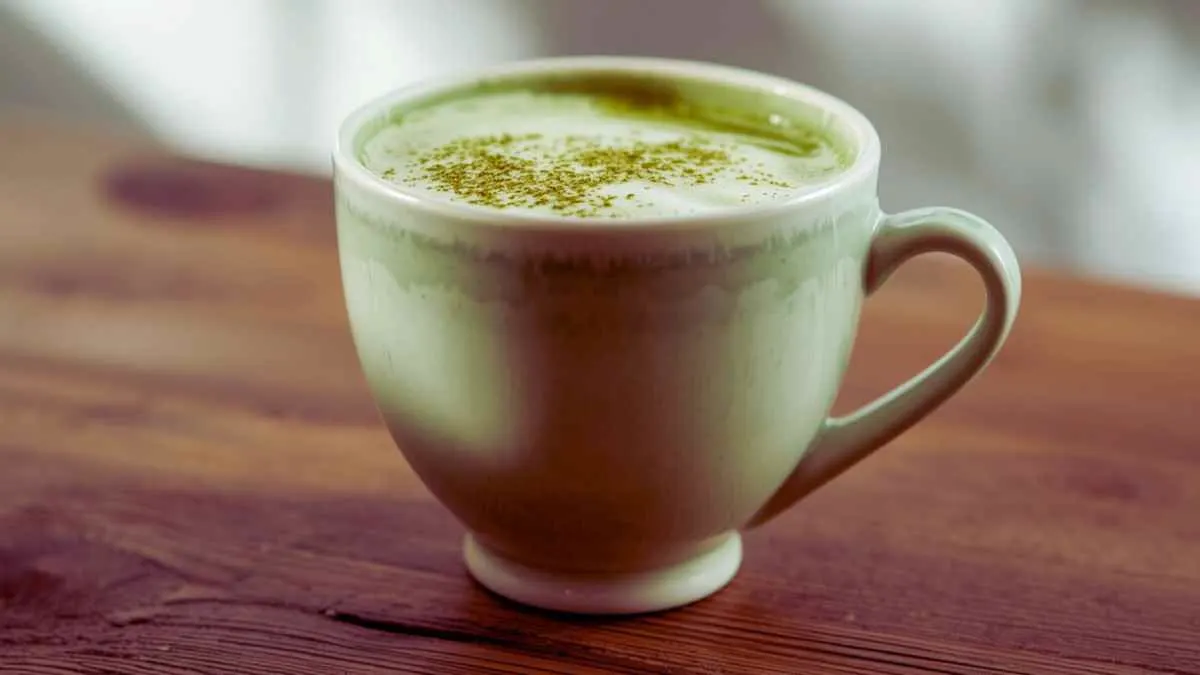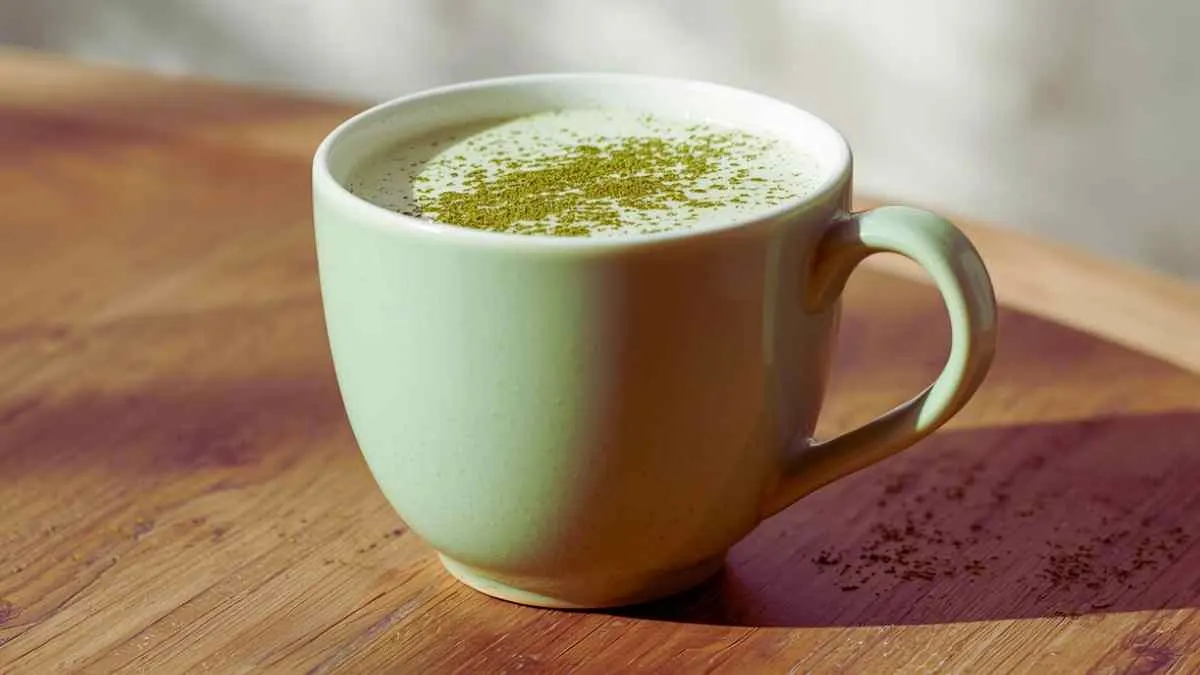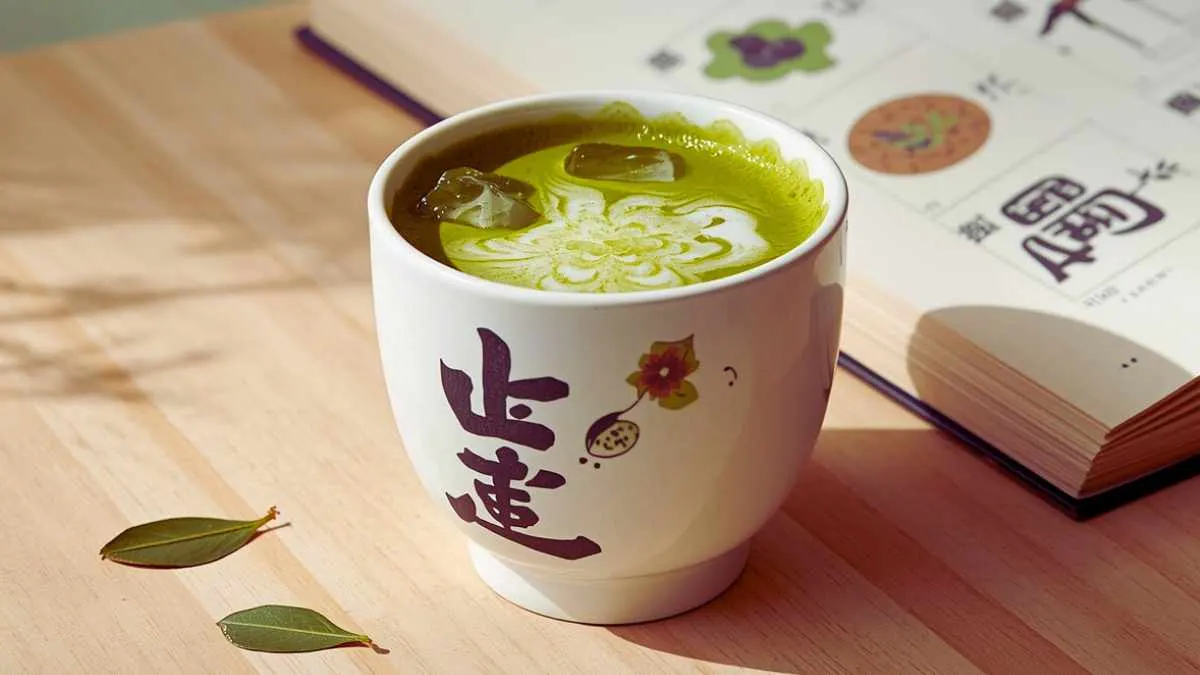An Iced Matcha Latte Recipe Japanese is a delicious, refreshing beverage made with matcha green tea powder, milk (or dairy-free alternatives), and ice. It’s a popular drink for those looking to enjoy the rich taste of matcha while keeping cool in warmer weather.
This Japanese-inspired drink offers a perfect balance of smoothness from the milk and the earthy, slightly bitter taste of matcha.
Matcha has become a staple in modern beverages, and for good reason! This finely ground green tea powder offers a unique taste, an array of health benefits, and versatility in preparation.
If you love matcha, then the Iced Matcha Latte is an ideal way to enjoy its vibrant, green goodness in a refreshing form.
This Japanese-inspired drink has gained widespread popularity for its creamy texture, soothing taste, and the invigorating energy it offers without the jitters commonly associated with coffee.
Stay tuned!
What is an Iced Matcha Latte?

An Iced Matcha Latte is a cold version of the classic matcha latte, which combines finely powdered matcha green tea, chilled milk (dairy or plant-based), and ice. The Japanese matcha used in this recipe gives the drink its signature green color and earthy flavor.
Traditionally, matcha is made by whisking the powder with hot water to create a smooth, frothy beverage. For an iced version, cold milk or a milk alternative is added along with ice to make it refreshing for warmer weather.
The beauty of an iced matcha latte is its balance. The rich, slightly bitter flavor of matcha is softened by the creaminess of milk, and the ice provides a cool, refreshing element.
How to Make Iced Matcha Latte Recipe Japanese:

Here’s how you can make an authentic iced matcha latte at home, following a simple recipe inspired by Japanese tradition:
Ingredients:
-
1-2 teaspoons of matcha powder (high-quality Japanese matcha is recommended)
-
1/4 cup hot water (not boiling, ideally around 175°F or 80°C)
-
3/4 cup milk (use dairy or any plant-based milk like almond, oat, or coconut)
-
1-2 teaspoons sweetener (honey, agave, or maple syrup, or a sugar substitute of your choice)
-
Ice cubes
Instructions:
-
Prepare the Matcha: In a small bowl, sift 1-2 teaspoons of matcha powder to prevent clumping. Add about 1/4 cup of hot water (not boiling) to the matcha. Whisk the mixture using a traditional matcha whisk (chasen) or a small hand whisk until smooth and frothy. If you don’t have a matcha whisk, a small regular whisk or frother will work as well. This process helps dissolve the powder completely and releases the characteristic aroma and flavor of matcha.
-
Sweeten the Matcha: Add your sweetener of choice to the warm matcha liquid and stir until fully dissolved. Adjust sweetness based on your personal preference.
-
Prepare the Milk: In a separate glass, fill it with ice cubes, and pour in your cold milk or milk alternative. You can also froth the milk for a creamier texture, but it’s optional. The milk should be cold to keep the drink refreshing.
-
Combine: Pour the prepared matcha mixture into the glass over the milk and ice. Stir gently to mix the matcha and milk evenly.
-
Serve & Enjoy: Your iced matcha latte is ready to be enjoyed! For an extra touch, you can sprinkle some matcha powder on top for garnish.
Matcha: The Health Benefits:
One of the reasons for matcha’s widespread popularity is its many health benefits. Matcha, made from ground green tea leaves, is a powerhouse of nutrients and antioxidants.
A. Rich in Antioxidants:
Matcha is packed with catechins, a type of antioxidant that helps fight free radicals in the body. The EGCG (epigallocatechin gallate) in matcha is particularly noted for its anti-inflammatory properties and its potential role in reducing the risk of chronic diseases like heart disease, diabetes, and certain cancers.
B. Boosts Metabolism:
Matcha has been shown to boost metabolism and promote fat burning, making it an excellent addition to a weight management plan. Research published by the National Institutes of Health (NIH) suggests that the catechins in matcha can increase thermogenesis (the body’s production of heat from digestion), leading to improved fat oxidation.
C. Mental Clarity and Calm:
Matcha contains L-theanine, an amino acid that promotes relaxation and enhances focus. L-theanine works synergistically with caffeine, providing a calm energy boost without the jitteriness associated with coffee. This makes matcha perfect for people looking for sustained focus throughout the day.
D. Detoxification:
Matcha is often touted for its ability to aid in detoxification. The high chlorophyll content in matcha can help cleanse the body by flushing out toxins and heavy metals.
E. Skin Health:
The antioxidants in matcha can help protect your skin from UV damage and premature aging. Matcha is also said to reduce the risk of acne and help soothe irritated skin due to its anti-inflammatory properties.
F. Enhances Immunity:
Matcha’s high content of vitamin C, combined with its antioxidants, can give your immune system a boost, helping to ward off infections and maintain overall health.
Iced Matcha Latte Variations:
While the classic iced matcha latte recipe is simple and delicious, there are several variations you can try to customize your drink according to your preferences:
A. Sweetened vs. Unsweetened:
If you prefer a less sweetened drink, you can skip the sweetener or adjust it to taste. Some people enjoy matcha’s natural bitterness and prefer their latte without any added sugar.
B. Plant-Based Milks:
For those who prefer non-dairy options, plant-based milks like almond milk, oat milk, or coconut milk work beautifully in an iced matcha latte. These milks can alter the flavor slightly, with coconut milk adding a rich, tropical touch and oat milk giving a creamy texture.
C. Iced Matcha Latte with a Twist:
-
Vanilla Iced Matcha Latte: Add a few drops of vanilla extract or vanilla syrup for a sweet, aromatic twist.
-
Iced Matcha Latte with Lemon: Add a slice of lemon to your iced matcha latte for a refreshing citrus burst.
-
Iced Matcha with Boba: For a fun twist, you can add boba pearls (tapioca pearls) for a bubble tea-inspired version.
Read Next: Orange Peel Tea Benefits And Side Effects | A Zesty Brew for Health and Wellness
Health Expert Opinions:
When making an iced matcha latte, it’s essential to consider the quality of the matcha. High-grade matcha (such as ceremonial grade) will offer a smoother taste and richer health benefits compared to lower-quality versions.
Experts from WebMD and the Mayo Clinic note that high-quality matcha is more nutrient-dense, providing better antioxidants, vitamins, and amino acids, which contribute to improved cognitive function and overall well-being.
Dr. Matthew Zawadzki, a health and wellness expert, recommends that those who are sensitive to caffeine enjoy matcha in moderation.
While the caffeine content in matcha is lower than coffee, it still provides a boost of energy. Harvard Medical School further suggests that individuals with caffeine sensitivity or anxiety issues should limit their intake of matcha to avoid overstimulation.
Key Takeaways:
-
Matcha Benefits: Rich in antioxidants, boosts metabolism, promotes calm energy, enhances mental clarity, and aids detoxification.
-
Recipe Customizations: You can adjust the sweetness, use plant-based milk, or add flavors like vanilla or lemon to personalize your iced matcha latte.
-
Health Considerations: High-quality matcha provides more nutrients, and it’s recommended to consume matcha in moderation, especially if you’re sensitive to caffeine.

